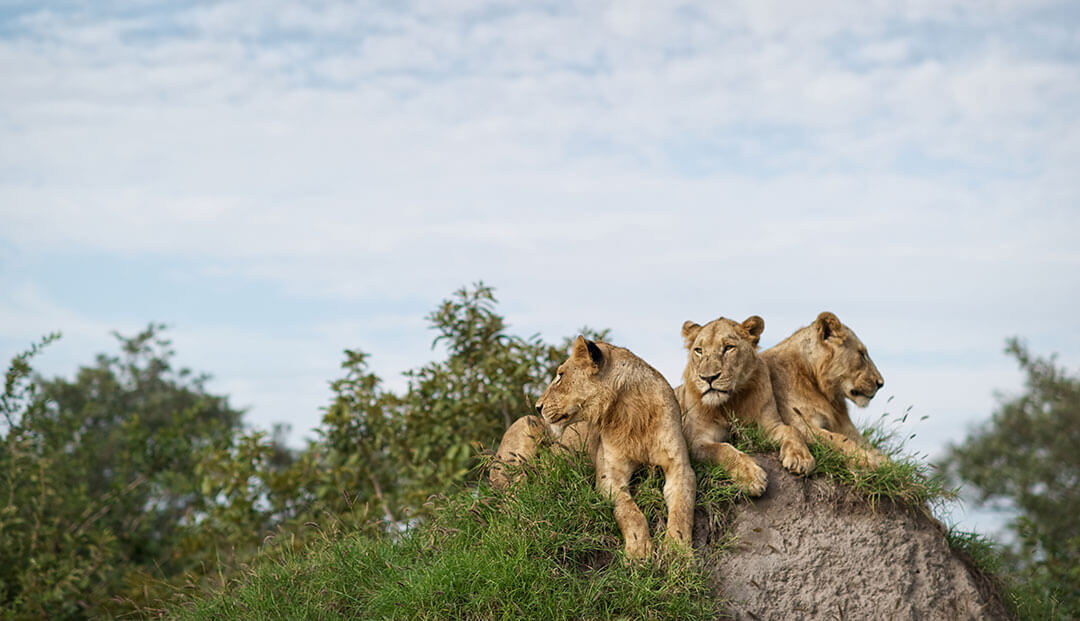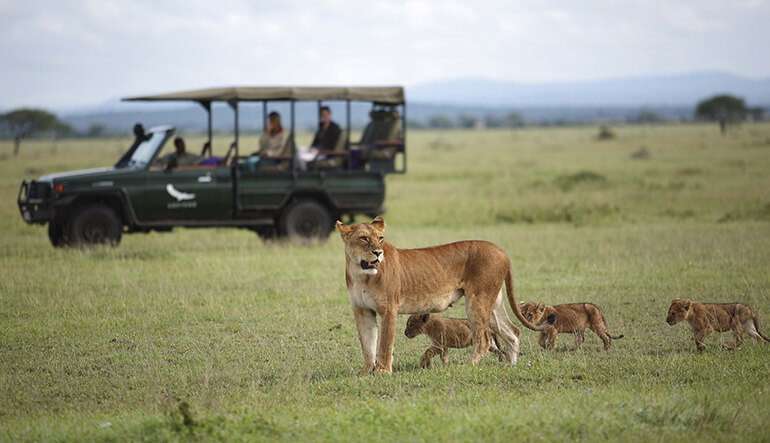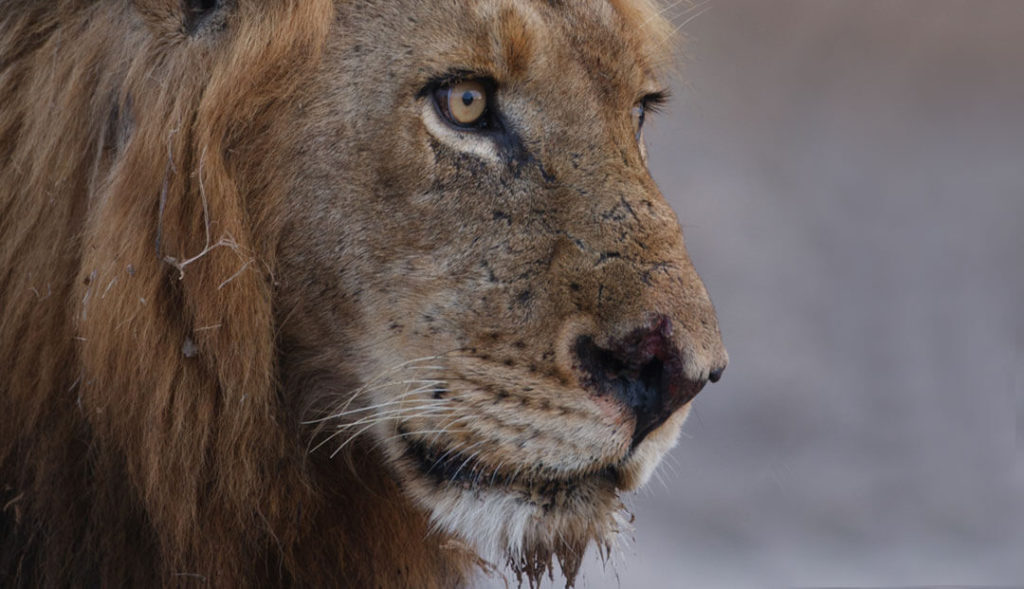A symbol of strength, courage, power and leadership, one of the most captivating animals on the planet is the lion. We can’t get enough of these majestic big cats, so we’ve compiled a list of interesting facts about lions.
Scientifically named Panthera Leo, the lion is one of five big cats, along with the tiger, leopard, snow leopard and jaguar, that form part of the genus Panthera in the Felidae family.
To get you excited for your dream safari in Southern Africa, we’re sharing a collection of interesting facts about these incredible creatures.
Love lions? Read about South Africa’s infamous Mapogo lion coalition and their notorious rule over the Sabi Sands.
The Social Structure and Pride Organisation of Lions
The only social cat species in the animal kingdom, lions live in social structures called a “pride.”
The size of a lion pride varies widely, and the structures may also differ between that of the African and Asian lion prides. Lions typically live in prides of up to 40 members, with the average pride consisting of about 14 members.
In some prides, lions divide themselves into gender-specific groups, seeing males and females remain separate, except at mating time.
The females form the core of the pride, with closely-related females – mothers, daughters and cousins – usually spending their entire lives in the same pride that they were born into.
If a lioness leaves a pride, she is usually not welcomed into a new group of lions, and typically does not survive for long. Lion prides are usually described as matriarchal, with communal care for the young.
It is quite different for male lions who are not as homebound as the females. Male cubs will only remain in the pride that they were born into until they are about 2 to 3 years of age.
After that, they then become wandering nomads for about two years until taking over another pride or forming a new pride at around the age of five.
As the leader, the defender and protector, the dominant male lion will mate with all of the females in the pride and will also defend the group against other males who may try to take over. On average, male lions can usually keep control of a pride for about 4 years.
Rarely remaining part of a pride for more than 4 to 5 years, once they are no longer capable of fathering cubs, male lions are usually driven from the group. A pride with older males is ripe for takeover by a coalition, a group of young nomad males, that breeding cycles may continue.
Lioness and three cubs on safari game drive in the Serengeti in Tanzania
Male Lion Coalitions
Some male lions, usually young nomads, will form a “coalition.” In most cases, coalitions are comprised of male lions that are often related. Predominantly for survival purposes, male lions in a coalition may take over an existing pride in order to reproduce and continue their bloodline.
During this kind of takeover, the coalition has to evict the resident males from the targeted group. This confrontation is usually violent and the weaker male lions are killed.
The victorious male lions that have taken over the new pride will kill all of the existing cubs belonging to the previous males. This act of infanticide accelerates the females readiness to mate with one of the newcomers.
One of the most infamous lion coalitions to ever roam the earth was the Mapogo lion coalition. This band of six brothers came together and ruthlessly dominated the plains of the Sabi Sands. Wiping out pride after pride, the Mapogos became known for their brutalist dominating tactics. They were so well-known, a documentary, Brothers in Blood: The Lions of Sabi Sand, was created about them. If you want to learn more about this fascinating lion coalition, read our post on The Mighty Mapogos.
One of the brothers from the Mapogo lion coalition
Lion Hunting Tactics
Female lions tend to do the majority of the hunting for the pride, stealthily working together as a group and using intelligent hunting tactics to catch their prey. While hunting may take place whenever the chance arises, it is typically done at night or in the early mornings
While lions are not very fast or nimble creatures, by contrast, the animals they hunt are some of the fastest on the planet. Consequently, lions have developed specific, strategic hunting methods.
The first method is for a lion to stalk its prey until they are close enough to give a burst of speed and pounce on the animal unexpectedly. The second is to find a bush close to something their prey needs, typically a water source, hide close by, and wait for the opportunity to attack.
As well as being incredibly good at hiding, lions are phenomenally patient and can use their strength and sense rather than speed to catch their prey.
The Mating and Breeding Habits of Lions
Mating
Lions typically reach sexual maturation by about two years old. By the age of four, most lionesses have already birthed at least one cub.
Lionesses will go into heat several times a year. In these periods, they will mate with one or more male lions countless times over the period of a few days. Lionesses do not have a specific sexual period or cycle, and in fact, mate repeatedly, as often as physically possible, in order to kickstart the ovulation process for reproduction.
Birthing Process
Once a female lioness is fertilised, the gestation period lasts for 15 weeks. When giving birth, the lioness will retreat to a secluded den area such as a marsh, cave or mountain hill, to protect the newborns from predators such as hyenas or nomad males looking to take over their territory.
Lionesses can give birth to one to five cubs in each litter and are able to give birth every two years.
Once a lioness has returned to the pride with her new cubs, she will raise them alongside other new mothers. This is termed as nursery group or “creche.”
Lionesses within the same pride often synchronise their ovulation in order to gestate and give birth around the same time. The advantage of this close association is that multiple mothers are available to defend the cubs against potential infanticidal males.
Lion Cubs
After birth, newborn lion cubs are born blind, have spotted coats and weigh between 1 to 2 kgs. After a few weeks of growth, the cubs will develop their sight and mobility, and the spotty appearance of their coat will fade.
Only about 1 in 4 lion cubs will survive to adulthood. Cubs are defenseless against predators and cannot hunt for themselves. The mother will take care of the cub, protecting it, hunting for it, preparing and teaching it to hunt and so on.
At around 11 months, lion cubs will begin hunting on their own.
Lionesses with their cubs
Growing Up
At around the 2 to 3 month mark, lion cubs will weigh about 3 to 4 kgs and will usually have all of their teeth.
As they grow up, the mother lion will move her cubs to a new den several times a month. This is done to avoid predators and keep the cubs out of the way of danger.
The lioness generally won’t rejoin the pride until the cubs are around 6 to 8 weeks old. This gives the cubs the change to grow large enough to avoid being dominated by other pride members.
Once the male lions reach adulthood, they will be banished from the pride and will be tasked with seeking out prides of their own.
Our Favourite Lion Documentaries
We could watch wildlife docusmnetaries all day! Two of out all-time favourite documentaries deatre lions. They are:
- Brothers in Blood: The Lions of Sabi Sand: An epic tale of six male lions who banded together to form the infamous Mapogo lion coalition, the most famed and brutal lion coalition that ever roamed the Sabi Sands. [Note: this documentary is incredible. 10/10 would recommend!]
- Blood Lions: A heart-wrenching documentary that depicts the atrocities of canned lion hunting and predator breeding farms in South Africa.
- Dynasties: Lion: This incredible BBC documentary series follows various endangered animal populations. Along with chimpanzees, penguins and painted wolves, there’s an episode dedicated solely to lions, which is obviously our fave.
Ending Thoughts
We are absolutley obsessed with lions, and we hope that aftre reading this piost you are too! Do you have another interesting fact about lions that we should add to this post? If so, comment it below!





I so much love to watch Lions on Natgeo wild channel T.V” Their behaviours Are so magnificient
They’re our favourite of the big cat family!